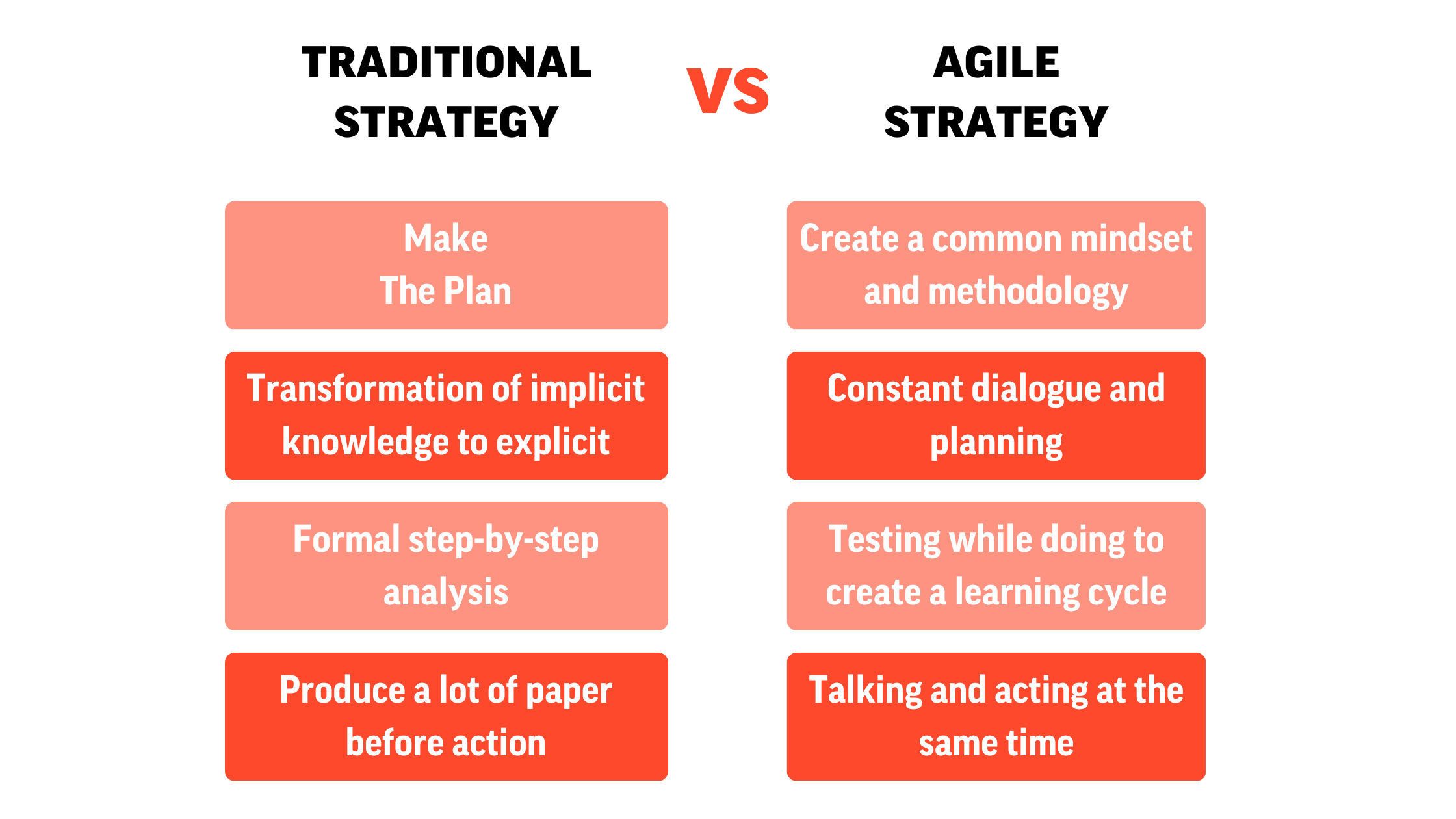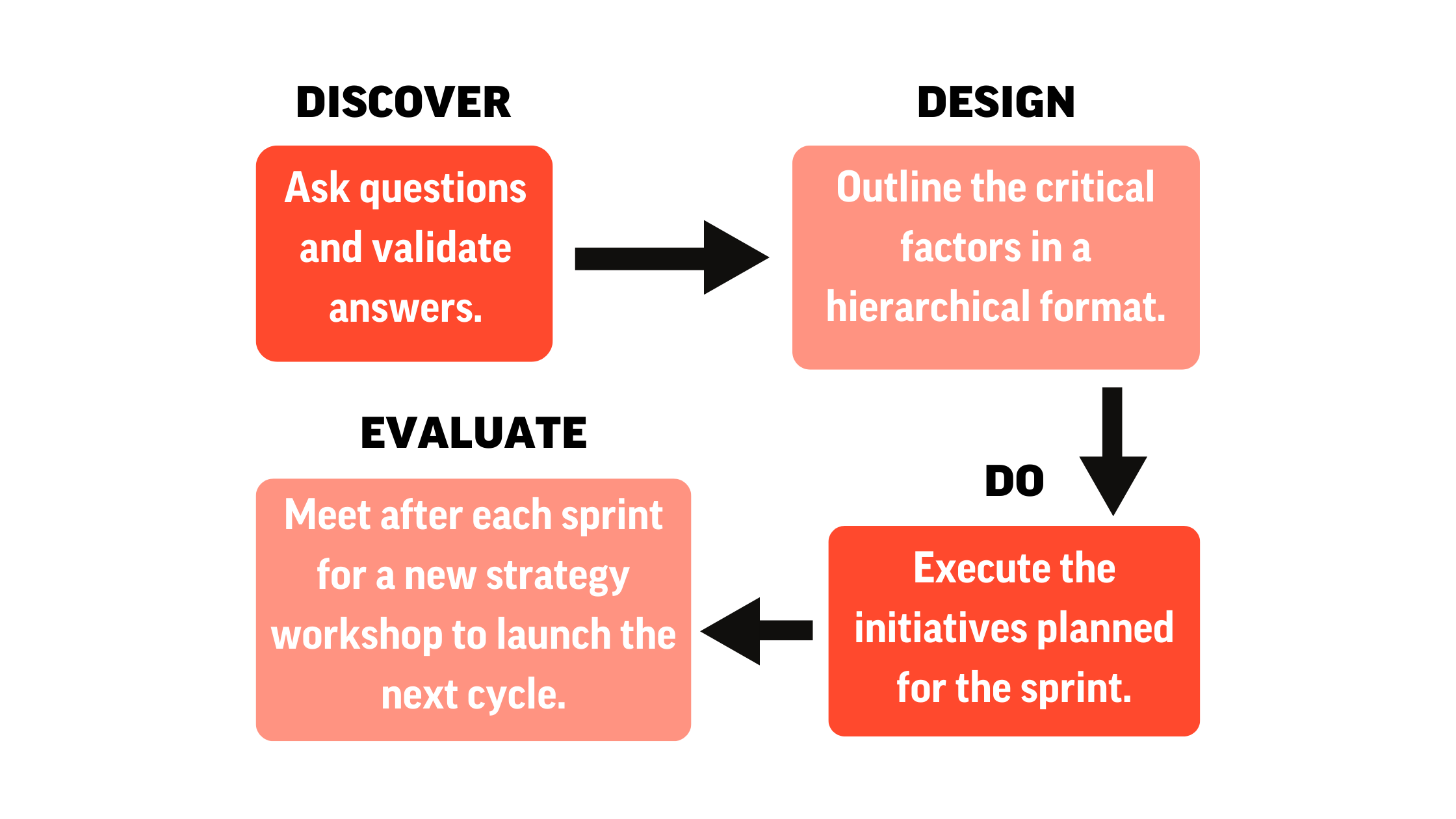Agile Development Strategy - Best Practices

In our previous blog about strategy getting lost in implementation, we stressed that the strategy process must be a conscious and cohesive one, with measurable results. The challenge is to align the strategy—the what and why—with the implementation—the when, how, and who. These elements are not interchangeable, and must be worked in the correct sequence.
The Agile Development Strategy
Richard Rumelt made a strong case for what strategy is really all about in Good Strategy Bad Strategy: Why it Matters
Despite the roar of voices wanting to equate strategy with ambition, leadership, “vision,” planning or the economic logic of competition, strategy is none of these. The core of agile development strategy is always the same: Discovering the critical factors in a situation and designing a way of coordinating and focusing actions to deal with those factors.
Hence, first decide what is most important and make a sound case for why it is critical. Then ask when, how and who to solve the issue and determine what resources are needed. Follow up by measuring progress and reviewing on a regular basis.
VUCA
With increased Volatility, Uncertainty, Complexity and Ambiguity (VUCA), traditional ways of working with strategy are no longer effective. This has become evident in the financial budgeting process with the development of new and more agile frameworks, most notably the Beyond Budgeting method. However, in applications other than budgeting, the challenge is to make the agile development strategy tangible in both intention and results. This allows for a more agile cycle to discover, design, do, and evaluate. When it comes to doing and evaluating, very often one loses track and action seems to evaporate, as reflected in so many research findings showing disappointing performance in strategy implementation.
Being Agile
However, an agile organization can respond rapidly to unexpected changes, events, market opportunities, and customer requirements. The focus is on processes and structures that facilitate speed, adaptation and coordinated results. The strategy process must support such focus; otherwise it is quickly discarded as an “alien” part of the leadership role, as it tends to slow the process down.
Working From What to What
Therefore, the question around developing and mastering an agile strategy process is from what to what. Let‘s look at some of the differences between traditional and agile development strategy:
- Traditional strategy process is about making The Plan, while agile strategy is all about creating a common mindset and methodology for a coordinated “Discover-Design-Do-Evaluate” sequence.
- Traditional strategy documents the transformation of implicit knowledge into explicit. Agile development strategy process is all about constant dialogue and planning (not The Plan or Document).
- Traditional strategy process is based on formal step-by-step analysis, while agile is based on testing while doing to create a learning cycle.
- Traditional strategy process tends to produce a lot of paper before action, while agile is about talking and acting at the same time.

Multiple studies have shown that traditional strategy implementation has a failure rate as high as 80–90%. In contrast, team members using agile strategy process act and then observe the implications of those actions at every step.
Implementing Agile Development Strategy
Certainly, leading an agile strategy process is easier said than done. In an agile process, leadership is faced with this very difficult dilemma: To gain control, you must release control. It doesn’t seem logical to guide an organization by dispensing with top-down plans, documents, and instructions. Leadership′s response is often, ‟If we don‘t have a documented strategic plan based on the best available overview, how can we ensure we are acting according to our strategy?”
Indeed, this a valid question. The answer is because team members will probably not follow the plan. A transparent performance surveillance system is the key to agile strategy.
Here is an example of how a typical agile process could be accomplished:
Discover: Ask questions and validate answers. Formulate assumptions and justify them. Scan the internal and external environment and compare to the desired state. Identify critical factors to focus on and prioritize.
Design: Outline the critical factors in a hierarchical format. Plan the next sprint. Define the deliverables, who should be involved, and identify needed resources.
Do: Execute the initiatives planned for the sprint. Monitor progress and performance regularly through a transparent monitoring system such as DecideAct, which will prompt team members to provide updates. Provide support to resolve any problems identified by status reports.
Evaluate: Meet after each sprint for a new strategy workshop to launch the next cycle. Review results and implications for ongoing strategy. Review performance indicators and backlog of initiatives; decide which to carry forward and which to close.
Discover for new sprint cycle: Review the overall strategy and determine whether basic assumptions are still valid. Make changes as needed.

Also hold yearly strategy sessions to review long-term goals and their relevant strategies. Make an in-depth discovery and update the long-term strategy with specific focus on the coming year with DecideAct.






.png?width=596&name=Strategy%20Evaluation%20(1).png)


.png?width=80&name=Team%20Alignment%20(1).png)
.png?width=80&name=Strategy%20Evaluation%20(1).png)